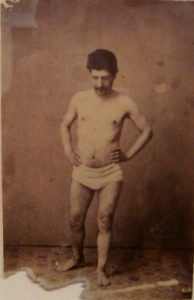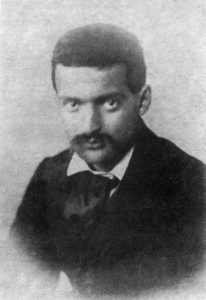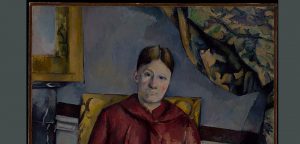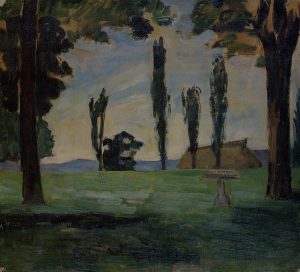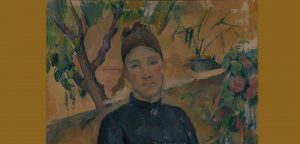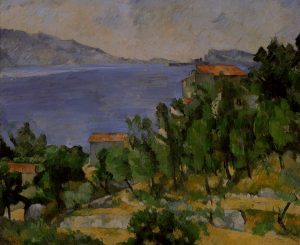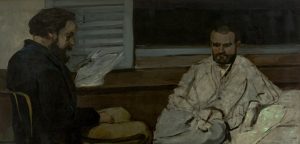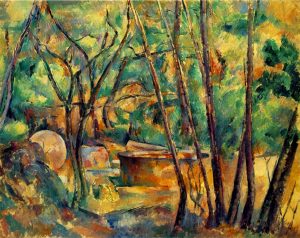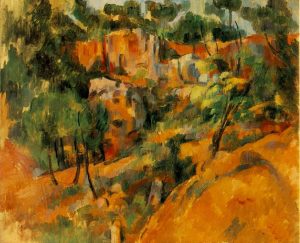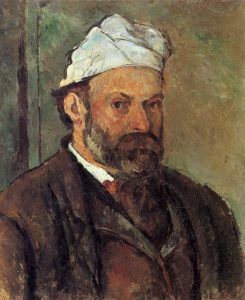Paul Cezanne was born on the 19th of January in 1839 in Aix-en-Provence, France.
1839 - 1906
Paul Cézanne

description
French painter, a bright representative of the new art, which influenced the emergence and development of such a modernist trend as Cubism. Cezanne is also called the primitive artist in the new painting.
The future artist was born in a well-to-do family of a pawnbroker, and then a big banker, Louis Auguste Cezanne. In his youth, Paul was interested in art and literature. He received a good education, excelling in exact sciences and languages. Thanks to the excellent memory, he could memorize whole works of the classics.
During his life, Cezanne created over 800 oil paintings, as well as a number of watercolor works. Some of them were destroyed by the artist himself.
Key Ideas:
– Basically diverging from the method of Impressionism, Paul Cezanne was intensely interested not in a vivid transfer of the dynamics of the light and air environment with its variability, but in stable laws and regularities of color forms and combinations, material tangibility, the weight of both the objective and the natural world. Comprehending these laws with enviable persistence, Cezanne worked for a long time on the same motif and the plot searching for the constructiveness of natural forms, as is clearly shown in numerous canvases and sketches with the image of Mount St. Victoire.
– The most famous postulate, preached by Cezanne is “depict nature with the help of cylinders, spheres and cones.”
– He argued about the need to “put Impressionism in order” to prolong its life in art, so that such paintings would be as eternal as the works of antiquity masters.
– In the artist’s works, qualities that are opposite to each other have joined together: harmony and dissonance, sense and passion, classics and modernity, individuality and mass character.
– Cezanne tried to convey the integrity of space. At the same time, there are almost no straight lines in his landscapes.
1839
1858 - 1865
1864
1869 - 1874
1874 - 1877
1878
1882
1886
1895 - 1899
1901
1906
The birth of the artist
Visiting the art school in Aix
Visiting the art school in Aix, he studied at the Paris Academy of Suisse until 1865.
His paintings had been rejected by the official Salon
First painted in Estaca. His paintings had been rejected by the official Salon until 1882.
Getting to know Hortense Fiquet
Getting to know Hortense Fiquet. Three years later their son was born. A few years later, the artist went to Auvers-sur-Oise and co-worked with Pissarro in Pontoise.
Return to Paris
Return to Paris, participation in the first and third exhibitions of Impressionist painters. All works were devastatingly criticised.
The father deprived his son of financial support
Having learned about the relationship between Paul and Hortense Fiquet, the father deprived his son of financial support.
Worked in Estac with Renoir
Worked in Estac with Renoir.
The registration of the official marriage with Hortense
The registration of the official marriage with Hortense, the break with Zola in connection with the release of novel “Creativity”, in the hero of which Cezanne recognized himself. Received an inheritance after the death of his father.
The personal exhibition
A personal exhibition organized by art collector Ambroise Vollard brought the artist fame, made him a cult figure among painters. The National Gallery in Berlin and the Prote museum bought his paintings.
Opened the studio
Opened the studio on the outskirts of Aix, worked hard.
The death
The artist died on the 22nd of October in 1906 in Aix-en-Provence, France.
Paul Cézanne
On Artist
flow
Impressionism
Romanticism
friends
Camille Pissarro
Auguste Renoir
artists
Gustave Courbet
Edouard Manet
Nicolas Poussin
Paolo Veronese
Tintoretto
Eugene Delacroix
Honore Daumier
El Greco
Charles-Francois Daubigny
By Artist
flow
Fauvism
Cubism
Syntheticism
Symbolism
friends
Auguste Renoir
Emile Bernard
artists
Maurice Denis
Pablo Picasso
Henri Matisse
Andre Derain
Marsden Hartley
Andrew Michael Dasburg
Diego Rivera
Leopold Survage
Patrick Henry Bruce
Layosh Tihany
Amedeo Modigliani
Jackson Pollock
Fernand Leger
Chaim Soutine
Pete Mondrian
Francis Bacon
Man Ray
Vilhelm Lundstrom
Paul Gauguin
Wassily Kandinsky
Roman Yulianovich Selsky
Adalbert Mikhailovich Erdelyi
Mikhail Kikoin
Giorgio Morandi
Jozef Pankevich
Robert Rafailovich Falk
Harry Phelan Gibb
Marjorie Acker Phillips
Thomas Garth Benton

